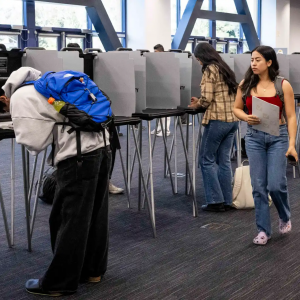City of Grants Pass v. Johnson
In June of 2024, the Supreme Court handed down its most important decision concerning homelessness in decades. In City of Grants Pass v. Johnson, the Court decided that a prohibition on public camping does not violate the Cruel and Unusual Punishments Clause of the Eighth Amendment. The case concerned Grants Pass, a small town in Oregon where about 600 individuals are homeless on an average day. Grants Pass has laws that prohibit camping on public property and overnight parking in public parks. Violations of this law trigger fines, and repeated violations can lead to imprisonment.
Grants Pass was prohibited from enforcing these laws due to Martin v. Boise, a 2018 decision from the Ninth Circuit Court of Appeals. In Martin v. Boise, the Ninth Circuit held that the Cruel and Unusual Punishments Clause bars cities from enforcing public camping ordinances when the number of homeless in the jurisdiction exceeds the number of “practically available shelter beds.” This ruling asserted that laws prohibiting public camping criminalize homelessness as a status and that people are “involuntarily homeless” when the number of homeless exceeds the number of shelter beds. The Ninth Circuit pointed to a Supreme Court decision, Robinson v. California, which concerned a California law that criminalized being an addict and established that the Eighth Amendment prevented a State from criminalizing people for their status.
In the majority decision, from the court’s six conservative justices, Justice Gorsuch made it clear that the Eighth Amendment concerns the method of punishment that the government may impose for the violation of criminal statutes, not whether the government can criminalize activity in the first place. He questioned the Robinson decision, stating that it was an unprecedented interpretation of the Eighth Amendment that the Court has never applied since. He then asserted that Robinson does not apply in this case because public camping statutes do not criminalize homelessness as a status—they simply prohibit actions regardless of who takes them. The majority wrote that a State can prohibit an act that it has an interest in preventing, even if it is in “some sense involuntary.” If the homeless want to escape accountability to the law because of moral considerations, that is “best resolved by the people and their elected representatives,” Gorsuch writes. It is not the role of judges or the Eighth Amendment to dictate the Nation’s homelessness policy.
The 3-person dissent, authored by Sotomayor and joined by the other two liberal justices, pushed back on the majority in several places. Sotomayor insisted that public camping ordinances criminalize the homeless for their status because they “single out for punishment the activities that define the status of being homeless.” “Homeless people necessarily break the law just by existing,” because public camping, as defined in the ordinances, includes sleeping in public with as little as a blanket. The dissent also digs into the purpose and enforcement of the Grants Pass Ordinances to confirm that they were meant to target the homeless. Sotomayor points to the fact that cities could punish littering, public defecation, drug possession, and harassment to tackle common concerns with homeless encampments. However, the dissent believes laws prohibiting camping in public are unconstitutional.
Grants Pass, Oregon is not an anomaly. Homelessness in the United States is at the highest level since the government began reporting this data in 2007, and it is especially common in the American West. Moreover, a majority of cities have laws restricting camping in public spaces. Now, the Supreme Court has given cities the go-ahead to clear homeless encampments.
Cities Crack Down
Already, cities are cracking down on encampments in the wake of the Court’s decision. Portland, Des Moines, and Kentucky are among the many jurisdictions that have enacted new public camping bans. In Tennessee, a 2022 law that made public camping a felony can now be enforced.
The most significant action has been in California, the state in which half of the nation’s homeless reside. Governor Gavin Newsom has ordered state agencies to clear homeless camps. Under this policy, which has already been in use by the California Department of Transportation, the state provides advance notice before clearing camps unless they “pose a threat to the life, health, and safety of the community.” Newsom’s executive order also urges local governments to take similar action and offers funding for them to do so.
California grants cities millions of dollars to clear homeless encampments, as part of the state’s $1 billion Encampment Resolution Fund. This spending is alongside billions more spent on funding housing and mental health treatment for the homeless. The money comes with requirements for cities to clear camps and the expectation of results. “The state has committed more than $27 billion to help local governments tackle the homelessness crisis—and we want to see $27 billion worth of results,” said Newsom. “I’m going to fund success and I’m not going to fund the rhetoric of failure anymore.”
Cities across California, such as San Francisco and Oakland, have been cracking down on encampments. Fresno has implemented one of the harshest crackdowns in the state, arresting a significant number of homeless people. Even Berkeley is making changes.
The City of Berkeley faces pressure from a lawsuit by a group of Berkeley businesses that accuses the city of sanctioning public nuisances by failing to clear the camps.
“It’s tough. It’s filthy. There’s trash everywhere. The street is frightening to drive down for customers. It’s not safe for our customers or our staff,” said Emily Winston, owner of Boichik Bagels, one of the plaintiffs in the case.
The businesses seek a court order that forces the city to remove the encampments. They are represented by attorney Ilan Wurman, who won a similar public nuisance lawsuit in Phoenix that required the city to clear a homeless camp.
On September 10, 2024, the Berkeley City Council passed a policy that allows for encampments to be cleared even when no other housing is available—if the encampment is a fire hazard, health hazard, public nuisance, or encumbrance to a median, travel lane, sidewalk, or work zone. Critics say that these exceptions could be applied to any homeless encampment.
Additionally, Berkeley was awarded $5.4 million by the state government—money that requires the city to focus on resolving encampments. To protest the new policy, the advocacy group Where Do We Go occupied the front lawn of Berkeley’s Old City Hall in an encampment from October to December.
Grappling With the Issue
Homelessness can be described as California’s existential issue. Despite the new policies and the billions of dollars of spending, the odds are against the crisis being resolved any time soon. Why is it so difficult?
The common tune of homeless advocates is that the primary solution is to build more housing. This approach, the “Housing First” mentality, has been the policy default at a federal level and especially in California.
The statistics suggest that it has not been working. In California, the number of permanent housing units dedicated to the homeless increased by 33% and the overall homelessness assistance spending increased by over 101% from 2016 to 2019. During the same period, the unsheltered homeless population rose by 47.1%. At a federal level, the same trend can be seen.
According to policy advisor Michele Steeb, “The Housing First approach discourages behavioral changes and no longer funds the treatment the homeless need to address their underlying struggles. Moreover, it ensures that nearly everyone who enters the homelessness system stays in it, as they are provided subsidized housing for life, without any expectation of healing and work, ever.”
Furthermore, homelessness is often a lifestyle choice. While living on the streets may not have been their ideal lifestyle, many homeless people come to prefer the freedom and community of encampments over trying to get back on their feet. San Francisco reported that over 50% of its offers of shelter and services were rejected by homeless people. In Seattle, that number is 60%. In Portland, over 70%. In Grant’s Pass, after Martin v. Boise made it so that the homeless could not be criminalized if they refused to go to shelters, the city shelter reported that shelter use fell by 40%. Some homeless advocates argue that the homeless who reject shelter offers do so because shelters are unsafe, but it is hard to imagine that living in a shelter is less safe than living on the streets.
If a housing shortage is not the crux of the issue, what is?
Drug abuse is one obvious culprit. In a large, representative study conducted by UCSF, ⅔ of the homeless participants self-reported having at one point regularly used illicit drugs. 31% regularly used methamphetamines at the time of the study. Apart from its crippling effects on the ability to function, drug abuse can cause the homeless to be turned away from shelters, or not seek them out at all. One reason that many homeless people reject offers of shelter and choose to remain in encampments is the “dependable access to illegal drugs” that encampments offer.
Mental illness is often brought up as a cause of homelessness as well. ⅔ of the study participants reported current mental health conditions and 82% reported having at one period experienced a serious mental health condition. However, since homelessness is acutely stressful and traumatic and can certainly cause anxiety and depression, much of the prevalence of mental illness is likely a result of homelessness rather than a cause. Still, of the homeless who had been hospitalized for a mental condition, 56% of these hospitalizations occurred prior to the first instance of homelessness. This suggests that mental illness could be a significant cause.
Closely related is childhood trauma. Childhood trauma can be quantified by the ACEs (Adverse Childhood Experiences) scale, which includes 10 items: physical abuse, sexual abuse, psychological abuse, physical neglect, psychological neglect, witnessing domestic abuse, witnessing drug or alcohol abuse, parental separation, and having a close family member abuse drugs or alcohol, experience mental health problems, or serve time in prison. The average ACEs score in the US population is 1.56. In homeless young adults, it is 5.22.
The tragic connection between childhood trauma and homelessness illustrates that homelessness is not simply a condition that some people happen to experience because homes are too expensive. There is a type of person that becomes homeless, and this type is defined by drug abuse, mental illness, and adverse childhood experiences. With the amount that California spends to combat homelessness, the state could pay the rent of every homeless person with billions of dollars to spare, even considering the high cost of living. The problem is, because the roots of homelessness go far deeper than the state of the economy, this simply isn’t feasible. “If two thirds of people on the streets right now are experiencing mental health symptoms, we can’t just pay their rent,” said Jason Elliott, Newsom’s senior adviser on homelessness.
The same processes that have caused the breakdown of family structure and an unyielding increase in mental illness have left a class of people detached. The homeless are detached from society, their families who are not willing to support them, and the people who stream past them on busy sidewalks.
Whatever the efficacy of new laws banning encampments, they certainly will not fix that. The most that they can do is push the problem out of our view, further to the margins. For the voters and business owners who don’t want to feel uncomfortable walking in public parks or down the street, that may be enough.
Featured Image Source: Western Regional Advocacy Project






Comments are closed.